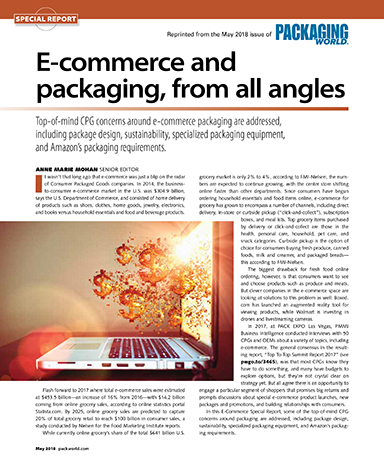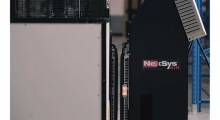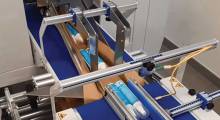It wasn’t that long ago that e-commerce was just a blip on the radar of Consumer Packaged Goods companies.
In 2014, the business-to-consumer e-commerce market in the U.S. was $304.9 billion, says the U.S. Department of Commerce, and consisted of home delivery of products such as shoes, clothes, home goods, jewelry, electronics, and books versus household essentials and food and beverage products.
Flash forward to 2017 where total e-commerce sales were estimated at $453.5 billion—an increase of 16% from 2016—with $14.2 billion coming from online grocery sales, according to online statistics portal Statista.com.
By 2025, online grocery sales are predicted to capture 20% of total grocery retail to reach $100 billion in consumer sales, a study conducted by Nielsen for the Food Marketing Institute reports.
While currently online grocery’s share of the total $641 billion U.S. grocery market is only 2% to 4%, according to FMI-Nielsen, the numbers are expected to continue growing, with the center store shifting online faster than other departments.
Since consumers have begun ordering household essentials and food items online, e-commerce for grocery has grown to encompass a number of channels, including direct delivery, in-store or curbside pickup (“click-and-collect”), subscription boxes, and meal kits. Top grocery items purchased by delivery or click-and-collect are those in the health, personal care, household, pet care, and snack categories.
Curbside pickup is the option of choice for consumers buying fresh produce, canned foods, milk and creamer, and packaged breads—this according to FMI-Nielsen. The biggest drawback for fresh food online ordering, however, is that consumers want to see and choose products such as produce and meats.
But clever companies in the e-commerce space are looking at solutions to this problem as well: Boxed.com has launched an augmented reality tool for viewing products, while Walmart is investing in drones and livestreaming cameras.
Article topics










